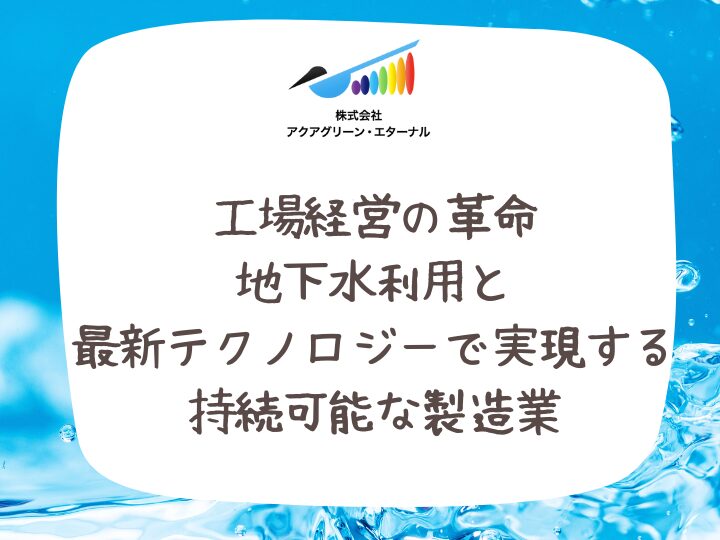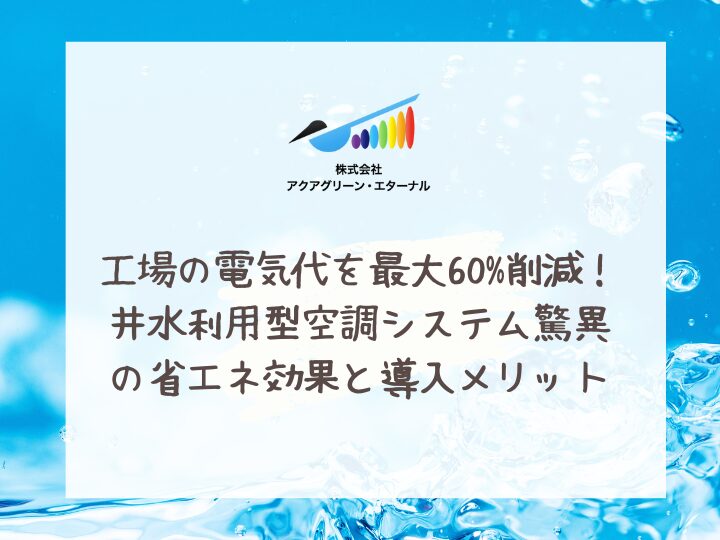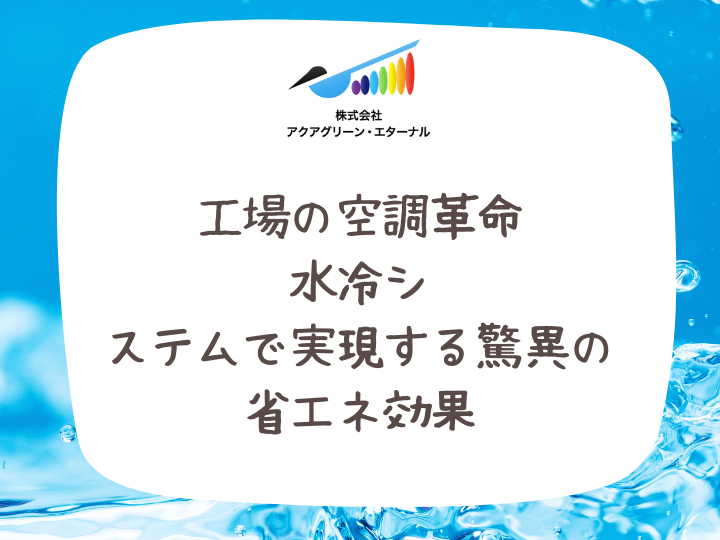Revolutionizing Factory Management: Sustainable Manufacturing Made Possible Through Groundwater Use and the Latest Technology
Explains the importance of groundwater utilization in factory management and the challenges it poses. Points out the importance of balancing cost efficiency with environmental impact, the risks of land subsidence and saltwater intrusion, the introduction of the latest monitoring technology and water quality control systems, recharge technology and circulation systems for sustainable use, as well as alternative technologies and energy-saving strategies. Emphasizes the need for strategic resource management that takes into account long-term business continuity and coexistence with the local community.

Current status and issues of groundwater use: From the perspective of factory management
Groundwater utilization is an important strategic choice for factory management. Many manufacturers utilize groundwater because of its cost-effectiveness and availability. The economic benefits are particularly evident in water-cooled air conditioning systems and cooling applications in manufacturing processes. However, these benefits must always be balanced against the potential environmental impacts.
Subsidence and saltwater intrusion caused by excessive pumping are not just environmental issues, but can have a direct impact on the long-term operation of factories. For example, subsidence can cause damage to buildings and equipment, increasing repair costs and the risk of production interruptions. Salinization can also lead to higher water treatment costs and accelerated corrosion of equipment, which can have a negative impact on product quality.
Therefore, factory managers need to view groundwater use not simply as a cost-cutting measure, but as part of strategic resource management that takes into account long-term business continuity and symbiosis with the local community.
Introducing advanced groundwater level monitoring technology
Monitoring groundwater levels is not just an environmental consideration, but an important initiative that is directly linked to the efficient operation of factories. We recommend the introduction of a real-time monitoring system that utilizes the latest IoT technology. This will make it possible to immediately detect short-term water level fluctuations and anomalies that could not be detected by conventional periodic manual measurements.
For example, by installing sensors in multiple observation wells and linking them to a cloud-based data management system, it becomes possible to continuously collect and analyze water level data. By incorporating a predictive model using AI technology, it is also possible to forecast future water level fluctuations and develop optimal pumping plans.
Although such a system requires an initial investment, in the long term it will lead to cost savings through reduced human resources and optimal use of water resources, as well as enhanced risk management. It will also be seen as a Corporate Social Responsibility (CSR) activity, as the collected data will be shared with local water resource management agencies.
Advanced water quality management and innovative purification and treatment technology
When using groundwater in factories, water quality management is an important factor that directly affects productivity and equipment life. In addition to conventional periodic water quality testing, the introduction of a continuous monitoring system is effective. In particular, by monitoring basic parameters such as electrical conductivity, pH, and turbidity in real time, it becomes possible to immediately detect and respond to sudden changes or abnormalities in water quality.
In terms of water treatment technology, the introduction of the latest membrane technology and electrochemical treatment methods should be considered. For example, reverse osmosis (RO) systems can effectively remove soluble substances that are difficult to remove using conventional sand filtration and activated carbon adsorption. In addition, electrodialysis and electrodeionization methods have excellent capabilities for selectively removing specific ion components, making them effective for adjusting water quality according to the application.
The introduction of these advanced technologies will improve the accuracy of water quality management and treatment efficiency. As a result, it will lead to more stable product quality, longer equipment life, and reduced environmental impact. Although the initial investment will be large, from a long-term perspective, it will be a strategic investment that will greatly contribute to improved productivity and cost reduction.
Development of innovative groundwater recharge technology and recycling system
For sustainable groundwater use, active recharge and the introduction of advanced recycling systems are essential. A highly efficient rainwater recharge system that combines permeable pavement and underground infiltration trenches is attracting attention as the latest recharge technology. This system can return rainwater from a wider area to the ground more efficiently than conventional infiltration pits, and the entire factory site can be used as a recharge area.
In addition, for the water circulation system within the factory, it is effective to introduce an advanced treatment system that combines the membrane bioreactor (MBR) and reverse osmosis (RO). This system can remove organic matter and soluble substances that were previously difficult to treat, and can significantly improve the quality of the treated water. As a result, it is possible to dramatically increase the reuse rate of the water as cooling water or cleaning water.
Furthermore, by linking these systems with IoT technology, water quality and volume can be monitored in real time, and optimal operation control can be performed, improving energy efficiency and reducing operating costs. Although the initial investment is large, it is possible to achieve both long-term cost reductions and environmental load reductions through the effective use of water resources.
Introducing innovative alternative technologies and comprehensive energy conservation strategies
The latest geothermal energy utilization systems are attracting attention as an alternative technology to reduce dependency on groundwater. In particular, closed-loop geothermal heat exchange systems are excellent in that they can efficiently utilize underground heat without directly using groundwater. This system is said to be able to reduce energy consumption by 30-50% compared to conventional air conditioning systems, and also contributes to a significant reduction in CO2 emissions.
In addition, the introduction of an Integrated Energy Management System (IEMS) is effective in improving the energy efficiency of the entire factory. The IEMS monitors and controls all energy consuming equipment in the factory in real time and automatically selects the optimal operating pattern. By incorporating predictive control using AI technology, further energy savings and peak cutting and peak shifting are possible.
In addition to introducing these advanced technologies, it is also important to take hardware measures such as high insulation of buildings, active use of natural light, and introduction of highly efficient lighting systems.Furthermore, by implementing software measures such as educational programs to raise energy conservation awareness among employees and the introduction of incentive systems, a comprehensive energy conservation strategy can be constructed.
This multifaceted approach will enable the optimization of groundwater use and improvement of the energy efficiency of the entire factory at the same time, making it possible to reduce the environmental impact and strengthen cost competitiveness. Investment decisions based on a long-term perspective and continuous improvement efforts will be the keys to sustainable factory management.



